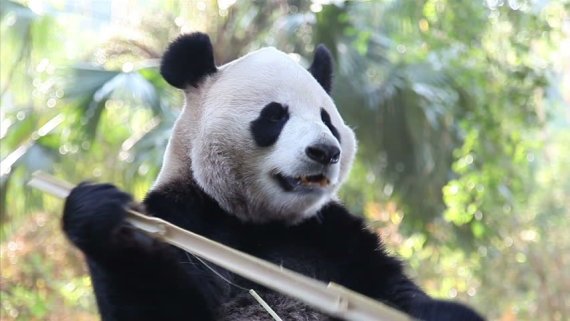Martien Groenen, known for sequencing the genome of chickens and pigs, will help with the genetic analysis of the giant pandas that are coming to Ouwehands Zoo. With this the management of the panda population can be improved. Arjen Wals, professor in Social Learning & Sustainability, will participate in an educational program on the importance of biodiversity.
‘The pandas will probably draw a lot of school classes and families to the zoo’, Wals knows. ‘That is an exquisite chance to allow people to discover how our life style affects the disappearance of the panda’s habitat, and many other species. The mining of resources that we have in our mobile phones, affects the biodiversity throughout the world. By developing panda-education programmes for different target groups and researching their effectiveness, we want to develop awareness and at the same time bring trading opportunities.’ Indicating that people can actually make a difference in the declining of biodiversity is essential, says Wals. ‘If the education about complex issues such as biodiversity stops after understanding and awareness, and we do not challenge people to change their everyday life style, this will lead to apathy and feeling of incapability to change, exactly what you do not want.’
By developing panda-education programmes for different target groups and researching their effectiveness, we want to develop awareness and at the same time bring trading opportunities.
Arjen Wals
Based on genetic research, Groenen can give advice about which animals should be crossbred to maintain a healthy population. Although he does not want ensure this just yet. ‘The plan is not made yet’, Groenen emphasizes. ‘First, we need to see what information is already available about the pandas, then we can start making a research proposal.’ Groenen does not know a lot about the endangered species yet, but previously he did map genetic information of other livestock and wild species. For the Phillipine Visaya warthog this information was used to develop a best management strategy for healthy offspring and thus conserving the species.
Thanks to DNA research inbreeding can be prevented on the one hand, with which the diversity that is present is preserved. On the other hand, analysis could also show that a deviant variant in the DNA is most probably more detrimental to the species than beneficial, Groenen explains.
Of course Groenen cannot do anything with only information about the gene package of the two Pandas that are coming to Rhenen. That is why he wants to collaborate with other researchers, such as Oliver Ryder of the San Diego Zoo, with whom he previously published the research on the Vasaya warthogs. He will also collaborate closely with the European Association of Zoos and Aquaria. Additionally, Groenen wants to compare the genetic map of the pandas to other species of which more information in known, such as polar bears, brown bears and people. ‘For certain mammal species, such as humans, we know where variation in the DNA sequence is tolerated and where it is less favourable. If we find a deviant in the DNA at such a less favourable place, then chances are high that this will be detrimental,’ Groenen explains.
At the start of December Arjen Wals, Martien Groenen and also Johan van Arendonk will meet with the director of Ouwehands Zoo. There it will be discussed what the parties can offer each other and which other partnerships and sources of funding are possible. There is still enough time to fully work out the plans. The pandas will only arrive in the Netherlands in the autumn of 2016.

